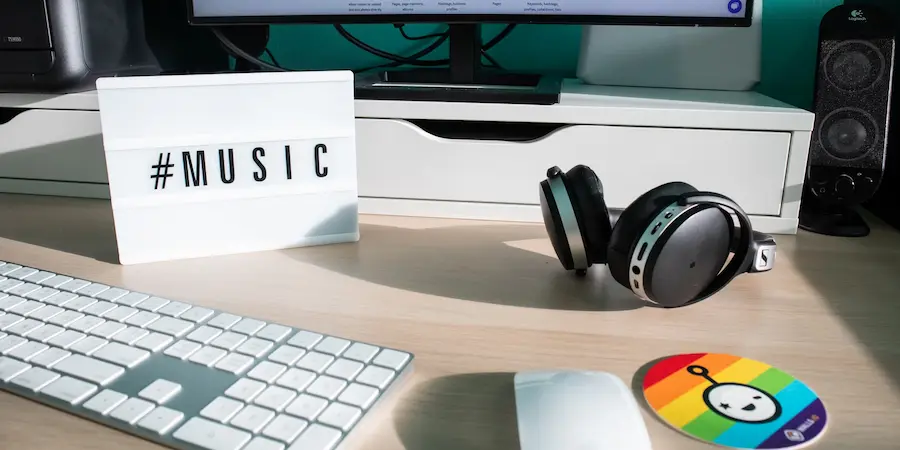Have you tried to open an MP4 video and your PC left you staring at an error? Relax, youre not alone. The MP4 format is one of the most widespread on the Internet due to its balance between quality and size, but depending on the player you have installed, it may not play on the first try. The good news is you don’t need to be a digital video jedi to fix it: with a couple of clicks and the right player, you’ll be watching your file in seconds. Also, if you like to tweak your setup like someone optimizing a motherboard BIOS, you can also choose which application will always open these files by default.
Open an MP4 on Windows: from double-click to Open with
The fastest way is to locate the MP4 on your disk, USB drive or downloads folder, and double-click: it will open with Windows’ default player. On most machines, that role is taken by Windows Media Player, which in its version 12 plays MP4 without anything extra; if you use version 11 or earlier, you’ll need to install a compatible codec or resort to an alternative player.
If you prefer to manually choose the app to open the file, right-click the MP4, select Open with and choose your favorite option, such as VLC Media Player, iTunes or Windows Media Player itself. This menu is perfect when you have several players installed and want to try which one gives you the best playback, or simply when you want to use a specific app temporarily without changing anything else.
Another route is to open your player first and, from its “File” > “Open” menu, look for the video by name and folder; this method is very useful when you move content between drives or work with media libraries. Want all MP4s to always open with your trusted player? In Windows, right-click any MP4 file, go to “Properties”, “General” tab, click “Change” and select the desired application; confirm with “OK” and that’s it, mission accomplished.
Before you break your head, verify the file ends in “.mp4”, since sometimes a misnamed file confuses even the best software. And a basic security tip: download your videos and players from trusted sites, because the last thing you want is a simple clip bringing unwanted guests to your system.

Third-party players: the Swiss Army knife (and its precautions)
When the system’s built-in player falls short, installing an alternative is usually more convenient than fighting with codec packs. VLC Media Player, Media Player Classic or XBMC (the veteran media center many still remember) are legendary names among those who want everything to play on the first try. These applications, often free, include their own decoders and support virtually any video and audio format, making them all-purpose tools.
VLC, for example, is to video what a good package manager is to Linux: it covers almost everything and rarely lets you down. Also, by being able to choose among several options, you can opt for lighter players if your machine is low on resources, allowing the CPU to focus on what matters: decoding the video and keeping playback smooth. For advanced users, there is even editing software like Camtasia to polish clips, and automation solutions like Virtual DJ Pro that allow you to create playlists of videos and play them one after another without intervention.
That said, with versatility comes responsibility. Installing third-party software that isn’t approved or reviewed can be risky; some installers come with adware, spyware or hidden malware. Avoid random codec packs and suspicious downloads, and favor the official websites of each program or well-reputed repositories. In other words: better one trusted player than three dubious ones. With that simple precaution, you’ll enjoy your MP4s without unpleasant surprises.
Using a Mac? QuickTime and VLC make it easy
On Mac, the path is just as straightforward. The default player is QuickTime Player, so a double-click on the MP4 should start playback immediately. If you prefer another app, right-click the file, choose Open with and select the alternative you like, such as VLC for OS X, which is also available on Mac and offers the same wide format support as on Windows.
As on PC, you can open the player first and use “File” > “Open” to locate the video if it’s on an external drive or in a complex folder structure. If you will watch MP4s frequently in a specific app, set that application as default from the file info dialog, and then each double-click will go to the correct player without extra steps.
For those who want to go a step further, the same ideas apply across Apple’s ecosystem: edit with specialized tools if you need to polish the content, or build playlists that play automatically if you’re preparing an event or a video session. And, of course, always download from reliable sources; it’s an essential practice on any operating system.
In short, playing MP4 on your computer is as simple as choosing the right player and, if you wish, setting it as default. With Windows Media Player 12, QuickTime Player and options like VLC in reserve, you have all the pieces to enjoy your videos without complications. Ready to hit play and leave buffering in the past?


